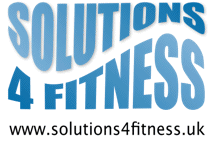Chiropractic is a primary health care profession that specialises in the diagnosis and treatment of musculoskeletal conditions of the joints, muscles, nerves, tendons and ligaments of the body, particularly those of the spine.
Solutions 4 Fitness - Chiropractic
Chiropractic is a primary health care profession that specialises in the diagnosis and treatment of musculoskeletal conditions of the joints, muscles, nerves, tendons and ligaments of the body, particularly those of the spine.
What is chiropractic?
Chiropractic in the UK is a government registered profession and it is law that all Chiropractors must be registered with the General Chiropractic Council (GCC) showing that they have studied to degree or Masters level in Chiropractic and have trained at the recognised colleges of Chiropractic. In order to stay registered, a Chiropractor has to continually update their professional skills through mandatory annual CPD (continual professional development). You can self refer to a registered Chiropractor without having to be referred by your GP and Chiropractors are qualified to treat all age groups including children and the elderly.
What can Chiropractic help?
Chiropractic is best known for treating low back pain, however, chiropractic also treats many other conditions including:
- Back and Neck pain
- Sciatica (leg pain)
- Shoulder/arm/elbow pain (including the pain from trapped nerves)
- Tension headaches
- Sports injuries
- Muscle strain
- Ligament, tendon and joint injuries (hip, knee, shoulder, ankle) including repetitive strain injury
What to expect when you visit a Chiropractor?
Your initial consultation includes taking a full history which will include questions about your general health to help identify the injury and whether the condition is suitable for Chiropractic care. This is then followed by an examination of all related areas which will include a variety of orthopaedic, neurological and chiropractic tests to help form a diagnosis of the condition/injury. Once diagnosed an explanation of the injury is given along with a proposed treatment plan including techniques/modalities to be used as well as advice about self treatment e.g. the use of ice/heat and the avoidance of activities that may be aggravating the injury. If the condition requires an X-ray or if any non-chiropractic health conditions are identified you will be referred to your GP.
Treatment
Chiropractic is a natural, hands on approach and a number of techniques are used depending on the condition being treated. These include chiropractic manipulation to the spinal joints designed to restore the function of the restricted joints hence reducing pain and muscle spasm, trigger point therapy of muscles, dry needling (medical acupuncture) of trigger points, therapeutic ultrasound of ligaments and tendons, kinesiotaping of joints and muscles, rehabilitation exercises to strengthen weakened areas and to reduce the risk of re-injury. Advice about lifestyle (work and home) posture and healthy living is offered.
Chiropractic Techniques
Chiropractic manipulation
A safe and highly skilled form of adjustment applied by the Chiropractor to the spinal joint to restore normal function. This in turn reduces spasm and nerve irritation
Trigger point therapy
A trigger point is a small band of tight, contracted muscle that can cause localized or referred pain. Trigger points can be treated either by applying localised and isolated pressure to the tight muscle or by using dry needling (medical acupuncture). The result is to release the constriction in the muscle hence alleviating pain and restoring normal muscle function.
Dry needling (medical acupuncture)
“dry needling” involves inserting an acupuncture needle into a tender or painful point (trigger point) and then appropriately manipulating (rotating and/or pistoning) it to release the trigger point.
Kinesiotaping
The use of kinesiotape for injuries is aimed at alleviating pain, reducing inflammation, relaxing muscles, enhance performance and help with rehabilitation as well as supporting muscles during a sporting event.
Therapeutic Ultrasound
Ultrasound therapy is widely used in treating soft tissue and sports injuries. It has been shown to cause increases in tissue relaxation, local blood flow, and scar tissue breakdown. The effect of the increase in local blood flow can be used to help reduce local swelling and chronic inflammation. One benefit of ultrasound therapy is that it is thought to reduce the healing time of certain soft tissue injuries. Ultrasound may also stimulate the production of more collagen which is the main protein component in soft tissue such as tendons and ligaments. Hence ultrasound may accelerate the proliferative phase of tissue healing.

